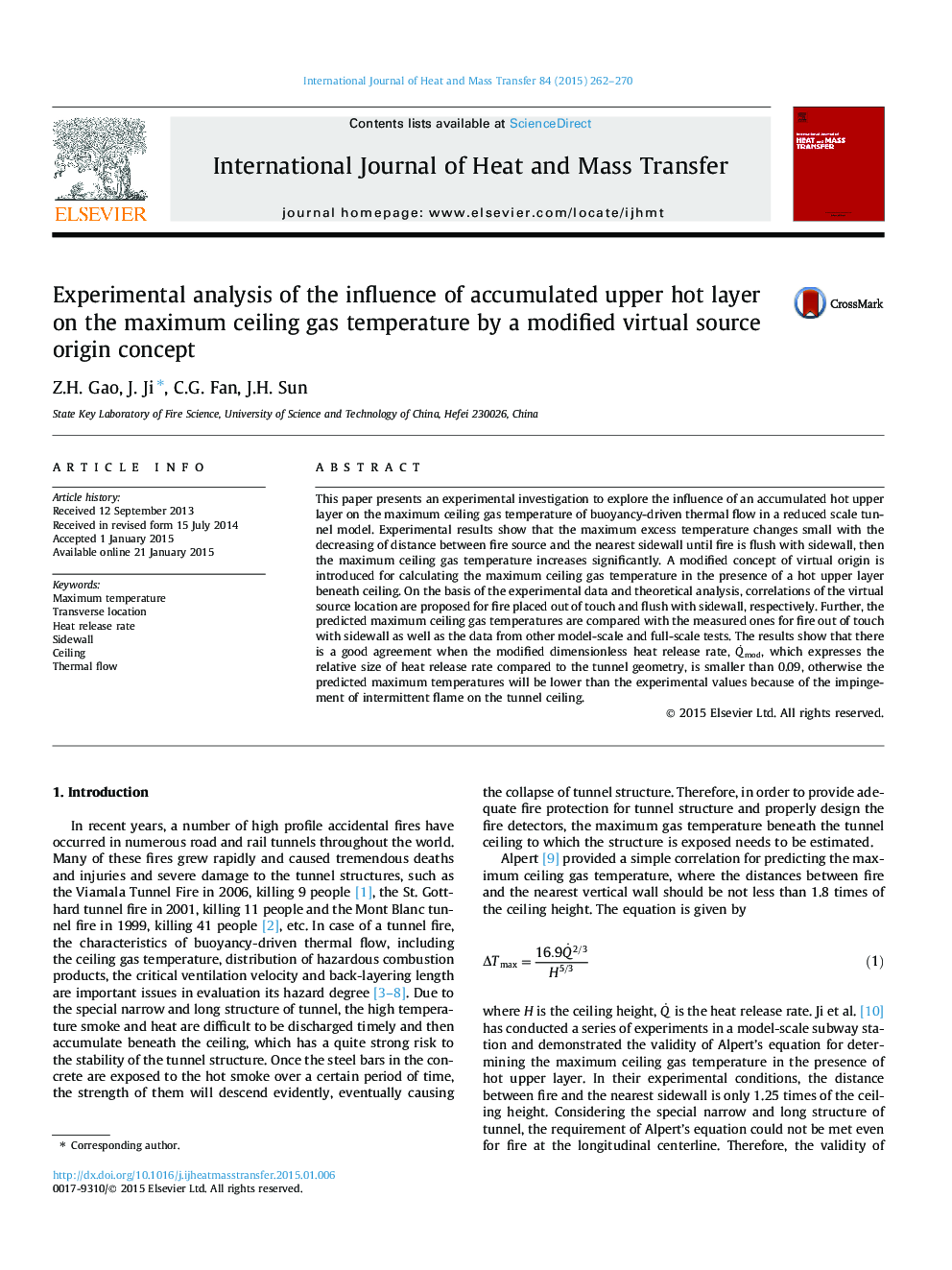| Article ID | Journal | Published Year | Pages | File Type |
|---|---|---|---|---|
| 656918 | International Journal of Heat and Mass Transfer | 2015 | 9 Pages |
Abstract
This paper presents an experimental investigation to explore the influence of an accumulated hot upper layer on the maximum ceiling gas temperature of buoyancy-driven thermal flow in a reduced scale tunnel model. Experimental results show that the maximum excess temperature changes small with the decreasing of distance between fire source and the nearest sidewall until fire is flush with sidewall, then the maximum ceiling gas temperature increases significantly. A modified concept of virtual origin is introduced for calculating the maximum ceiling gas temperature in the presence of a hot upper layer beneath ceiling. On the basis of the experimental data and theoretical analysis, correlations of the virtual source location are proposed for fire placed out of touch and flush with sidewall, respectively. Further, the predicted maximum ceiling gas temperatures are compared with the measured ones for fire out of touch with sidewall as well as the data from other model-scale and full-scale tests. The results show that there is a good agreement when the modified dimensionless heat release rate, QÌmod, which expresses the relative size of heat release rate compared to the tunnel geometry, is smaller than 0.09, otherwise the predicted maximum temperatures will be lower than the experimental values because of the impingement of intermittent flame on the tunnel ceiling.
Related Topics
Physical Sciences and Engineering
Chemical Engineering
Fluid Flow and Transfer Processes
Authors
Z.H. Gao, J. Ji, C.G. Fan, J.H. Sun,
